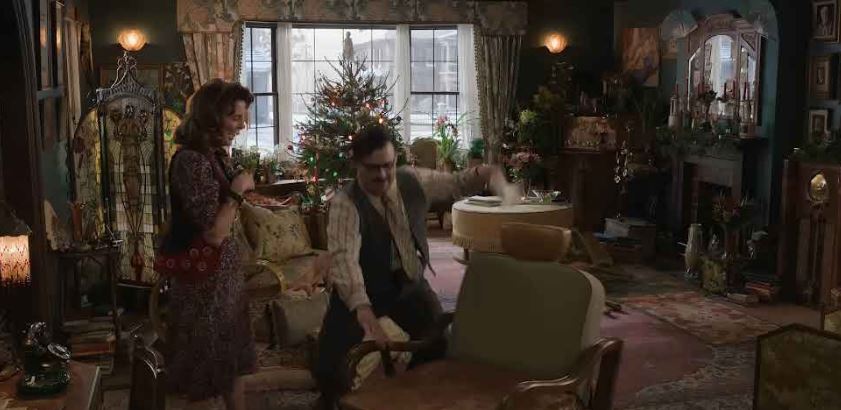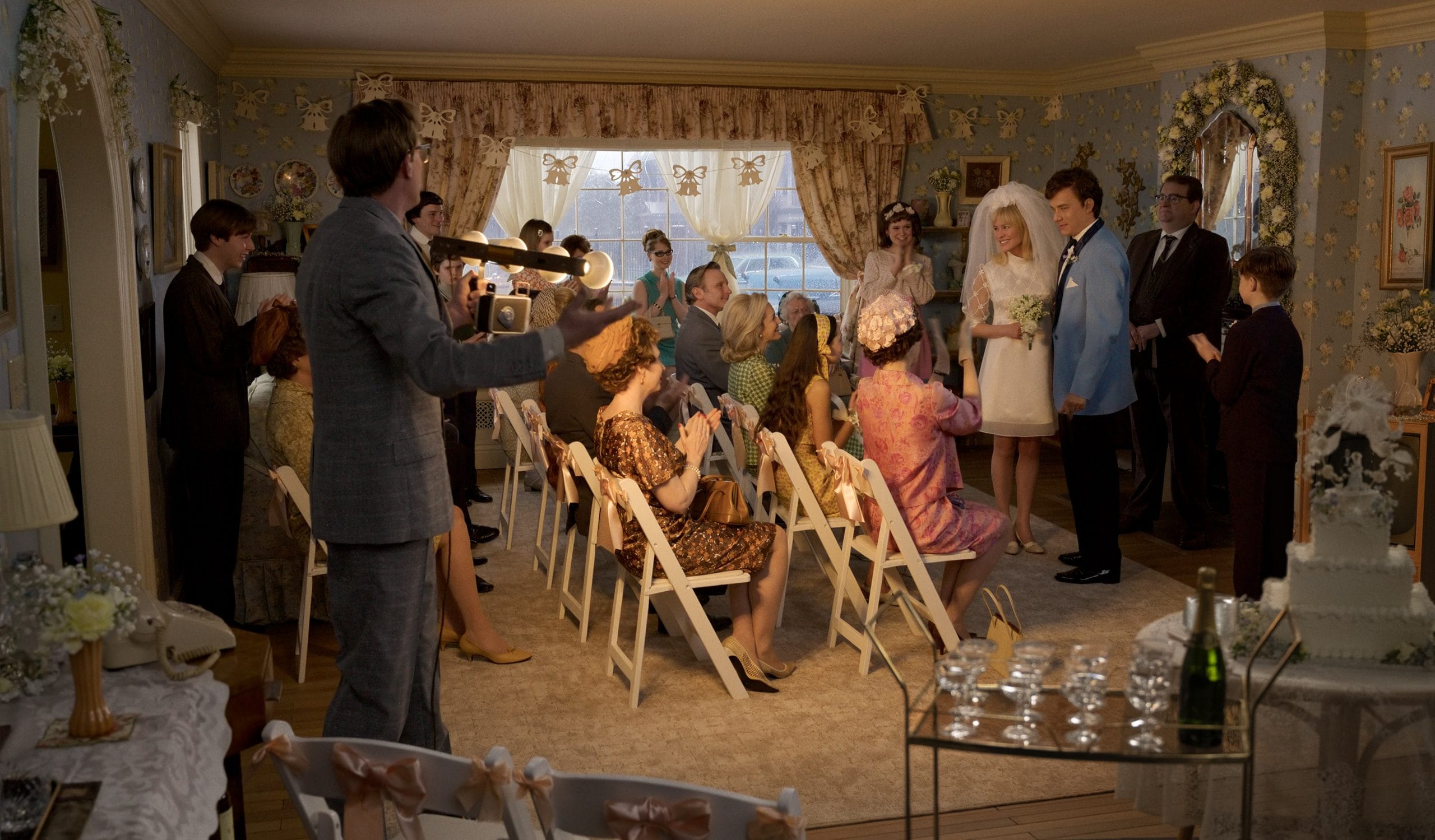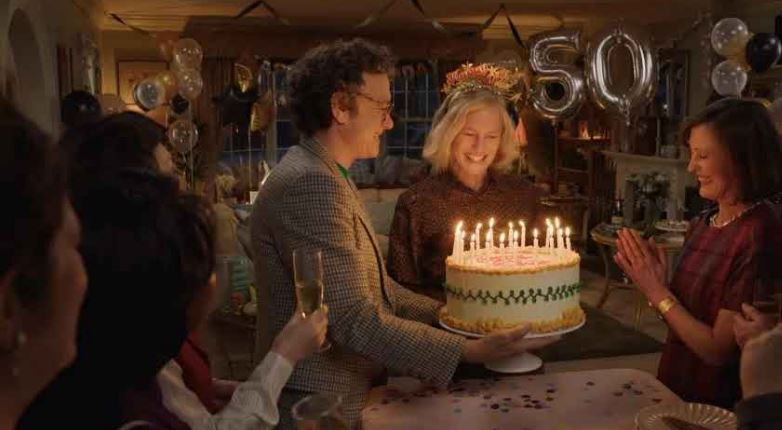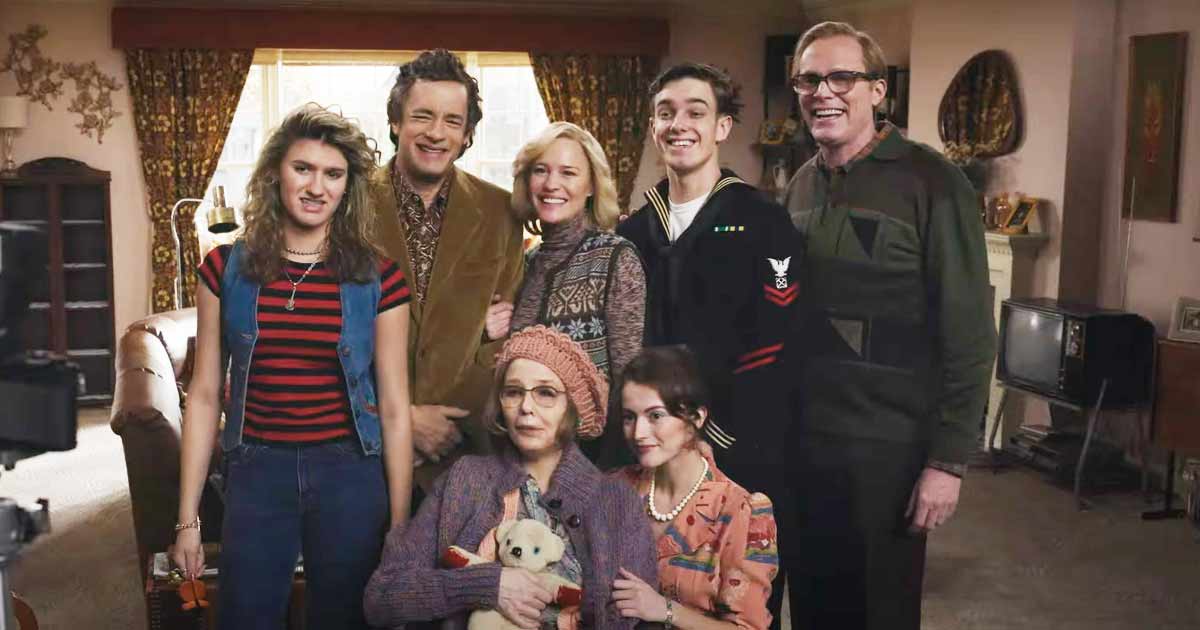When it comes to Robert Zemeckis’ latest, there’s the “gimmick” that most people know about and the one that many of them might not. The headline related to Here was that Tom Hanks and Robin Wright were going to be de-aged using the technology familiar to us from The Irishman onward. That they were also the co-stars of Zemeckis’ Forrest Gump, on the 30th anniversary of the release of that film, was a secondary consideration, seeing as how Here has nothing to do with that 1994 best picture winner.
Then there’s the second “gimmick,” and I’ll wait until at least after this sentence to reveal it, in case you consider it a spoiler and want to get out while you still can. (I doubt there’s really a way to discuss Here without revealing it.) There’s a stringent formal choice that threatens to render the movie a tough sit, especially if Here doesn’t do enough work to emotionally invest us.
Namely, Here consists of a single camera angle throughout the entirety of its 104-minute running time. It’s a fixed perspective of a particular living room in a particular house on the east coast of the United States, but it’s really focused on a patch of earth, or even a hovering pocket of air, over the course of the life of planet Earth, containing a house only in the last 150 years or so. We only get a single scene of a dinosaur scampering across it, though there are scenes set during the era of only indigenous Americans, and then some from the 18th century as well. During most of the scenes, it’s a family home, and for a disproportionate number of those scenes, that family features Hanks’ and Wright’s characters at different ages.
Calling this a “gimmick” does it something of a disservice, though. A gimmick is something cheap that catches our eye but is empty at its core. The – let’s speak of it more favourably as a narrative choice – in Here is more a delivery device for poignancy and even profundity, albeit one that doesn’t fully steer clear of Hollywood schmaltz.
Returned World War II veteran Al (Paul Bettany) and his wife Rose (Kelly Reilly) are the first couple we meet to inspect the empty living room and consider putting down roots, when the place went for the then-princely sum of $3400 – despite being across the street from the historic home where Ben Franklin’s illegitimate son lived, with Franklin himself appearing as a character. (That potentially places the film in New Jersey, though Here purposefully sends conflicting signals about where “here” actually is.) They’ll give birth to Richard, the boy who will become Tom Hanks, played by Hanks even at age 18. He’ll fall in love with Margaret (Wright), and they will also procreate, and we’ll see many of the events in their lives as the movie progresses.
But we’ll also see the brief occupancy of the man who invented the La-Z-Boy reclining chair and his wife (David Fynn and Ophelia Lovibond), a turn-of-the-century aviator and his wife (Gwilym Lee and Michelle Dockery), and a Black family in what appears to be close to present day, with Nicholas Pinnock as the father. The short vignettes are shuffled in time, the living room space bifurcated by various quadrilaterals that allow one vignette to dissolve into the other, though the scenes from each narrative proceed in chronological order.
There are ways that Here resembles an art installation more than a movie, simply because the central construct – based on a graphic novel by the same name – is so dominant that it quickly becomes the film’s defining trait. What saves Zemeckis’ film from being something you could get just a taste of at a museum, before moving on to the next exhibit, is that it skilfully extrudes these stories bit by bit, until we realise we have come to care about these characters deeply.
It’s not that we care about them because of who they are, but because the very universal nature of the events that befall them – weddings, deaths, the literal birth of a baby in that very room, countless holidays and job promotions and losses of jobs and losses of mental faculties – make them iconic Characters with a capital C. They are samples of the human condition, who parade through any room-sized subsection of the planet, which sees them come and go and yet persists beyond them with a certain unflappable immortality. It’s a variation on what David Lowery’s A Ghost Story does, and that’s a high compliment.
What sounds like it could be the makings for one of the best films of the year does have a few elements that keep it grounded in something a bit more conventional. For example, in many scenes, before you’ve had a chance to determine how you feel about it, Alan Silvestri’s plaintive score pierces the silence, telling you that something shimmering and life-affirming is about to happen. To the credit of writers Zemeckis and Eric Roth, each scene rarely gives us the lowest common denominator emotional payoff, tending to work more gradually in concert until a later payoff that’s more affecting for the accumulation. If the music was played with a lighter hand, then maybe that wouldn’t be Zemeckis or Silvestri.
And though it probably works better dramatically not to be too diffuse in the story development, we do wonder why we spend only a small fraction of the time with the inventor, the aviator and the present-day family, to say nothing of the silent Native Americans. You can’t give equal weight to everything or else you get another Hanks film, Cloud Atlas, which has too busy a narrative despite moments of transcendence. Yet some of these other stories feel like teases to something more interesting, if there was the time.
But perhaps that’s part of the point, and the mostly successful de-aging of the two leads underscores it. Time is fleeting. When we’re young, we think we have a limitless amount of it. As we grow older, we realise it all went somewhere before we even noticed. Even a house that stands for an uncommonly long century-plus does not have any claim to permanence, and the earth will soon forget that it was ever there. If a movie reminds us of these core limitations that are the very stuff of life, perhaps in a way that also urges to better appreciate those with whom we’re sharing the journey, so what if it’s served up with an extra helping of schmaltz?
Here is currently playing in cinemas.




